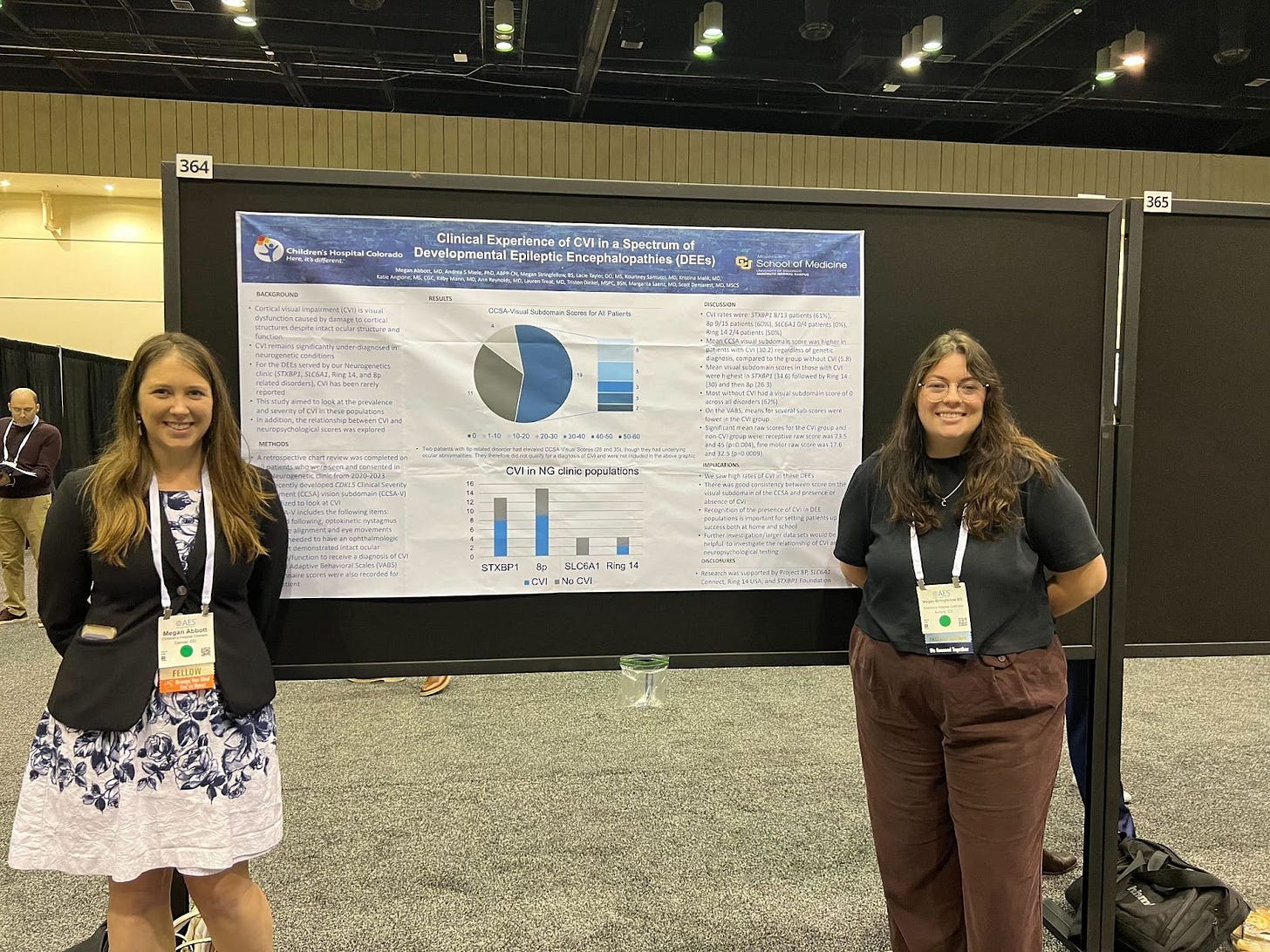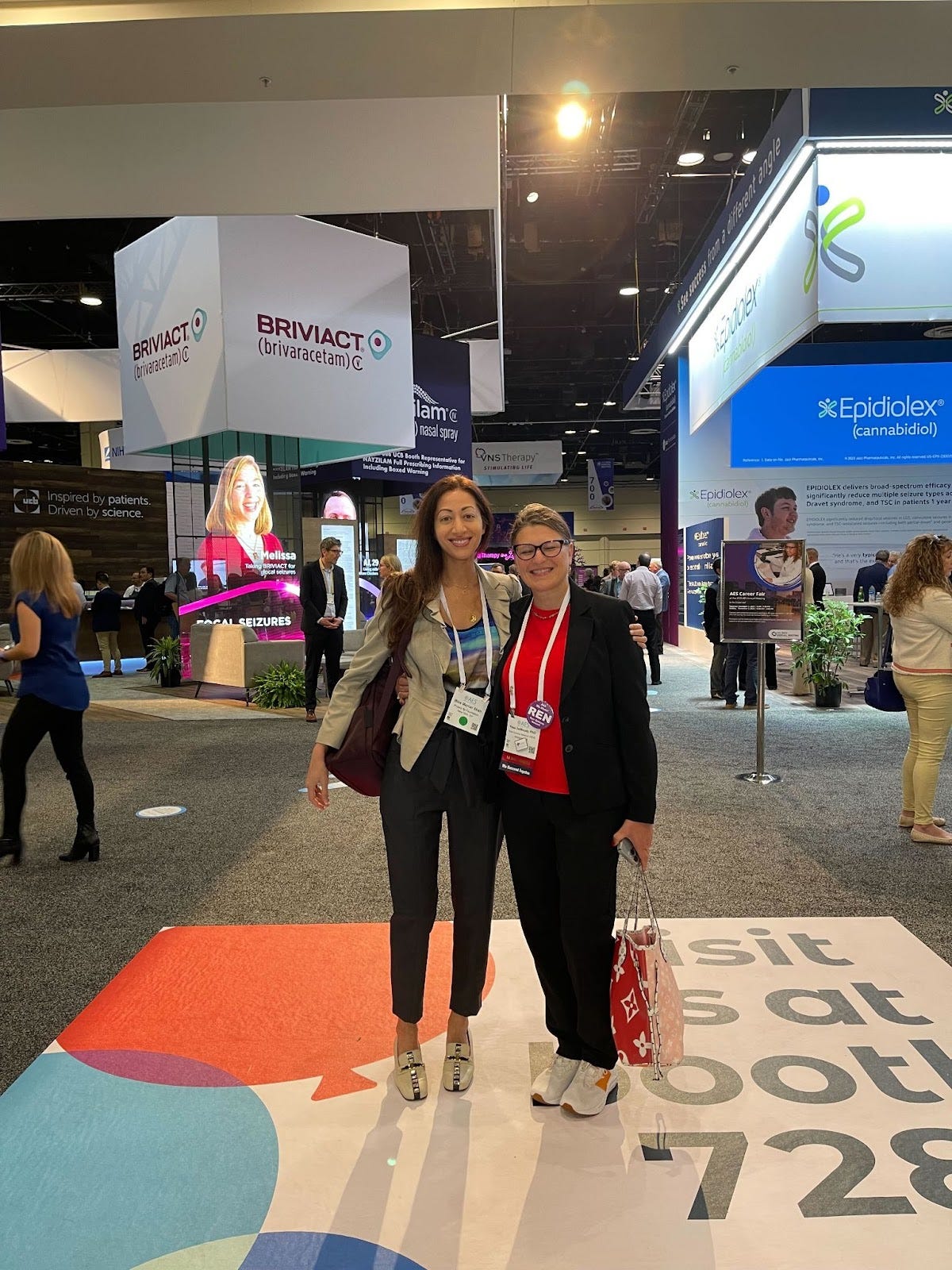Project 8p Research Newsletter - December 2023
🔬Research Highlight
This year was an exciting one for 8p research, with 9 sponsored research projects underway, 4 of which launched just this year.
The best way to keep up with 8p research is by attending our monthly Research Roundtable calls, which bring together 8p families and researchers to discuss research projects, results, new technologies, what matters most to 8p families, and more. We are taking the month of December off for the holidays, but if you’d like to join us at our next meeting in January, please get in touch. In the meantime, you can catch up on any of the past roundtable discussions by watching them on our YouTube channel, or reading our monthly Newsletters on the Chromo 8p Substack.
In 2024 we have even more to look forward to, including more research results and gathering together at the Project 8p Family and Science Conference in Denver, Colorado in August. More on that to come soon!
We are so thankful that you are a part of this community, and we can’t wait to see you in the new year!
🧠 Project 8p at the 2023 American Society of Epilepsy Meeting
Project 8p Founder and CEO, Bina Shah, attended the 2023 American Society of Epilepsy Meeting in Orlando, Florida earlier this month, along with many of the members of the NDD-CNV Commision.
The Multidisciplinary Neurogenetics Clinic at the Children’s Hospital Colorado (CHCO), which serves patients and families affected by Chromosome 8p and related neurogenetic conditions, had three posters at the conference. You can view the posters on the Project 8p website here: https://project8p.org/clinic-publications/

The NDD-CNV Commission (co-founded by Project 8p, Dup15q Alliance, and Ring14 USA) held an Investigators Workshop on the “Value of a Shared Framework for Copy Number Variants and Structural Variants” and a Special Interest Group on “Genetics: Clinical Genetics in 2024: What You Need to Know!”
“Epilepsies as a Collection of Rare Diseases” was presented by Dr. Kelly Knupps at CHCO. This theme resonated for most, with attendees throughout the conference discussing how science innovation is prevalent, but clinical therapies are still not very efficacious. Why is that? Perhaps, this will improve with more patient-led groups now intimately involved in advancing their translational science programs into the clinic and actively partnering with industry. There is a lot of work to be done but we did have Dr. Walter Koroshetz, head of NINDS, and other funders listen intently about CNVs, including Chromosome 8p disorders.
📄 Recent Articles and Publications
Let us know if you’ve read or published a paper or article recently that you think the 8p community should know about!
Assembloid CRISPR screens reveal impact of disease genes in human neurodevelopment. Meng, X. et al. Nature. September 2023. https://www.nature.com/articles/s41586-023-06564-w. Open Access.
In this study, Meng et al. performed a CRISPR screen of 425 NDD genes in two organoid systems. First, they used human subpallial organoids to screen for defects in interneuron generation, from which they identified 13 candidate genes, including 5 cell-cycle genes. Next, they integrated human subpallial organoids with human cortical organoids to form human forebrain assembloids, which they used to screen for defects in interneuron migration. This screen identified 33 candidate genes, including a number of cytoskeleton and cell migration genes, which they further validated. Efforts like these to map the function of NDD genes are crucial to understanding the complex biology of neurodevelopmental diseases and developing targeted therapeutics.
Atypical cortical networks in children at high-genetic risk of psychiatric and neurodevelopmental disorders. Doherty, JL et al. Neuropsychopharmacology. July 2023. https://www.nature.com/articles/s41386-023-01628-x. Open Access.
In this study, Doherty et al. used magnetoencephalography to assess network function in 34 children with 22q11.2 deletion syndrome and 25 control children. They identified specific changes in local and long-range cortical circuitry that were associated with ASD symptoms and cognitive ability.
Unraveling the Link between CNVs, General Cognition, and Individual Neuroimaging Deviation Scores from a Reference Cohort. Fraza, C. et al. November 2023. https://doi.org/10.1101/2023.11.29.23298954. Open Access. This article is a pre-print and has not been peer-reviewed.
Franz et al. used normative modeling to map neuroimaging features from several large datasets and then used these models to assess the neurobiological profiles of CNV carriers in the UK Biobank. They found a high degree of heterogeneity between carriers of the same pathogenic CNVs. Their study highlights the impact of individual genetic variation in phenotypic outcomes and provides a means to assess this impact at the level of the individual.
Earlier this year, the same group published a tool that makes it easier for others to perform similar analyses: Predictive Clinical Neuroscience Portal (PCNportal). Barkema, P et al. Wellcome Open Research. July 2023. https://wellcomeopenresearch.org/articles/8-326/v2. Open Access.
Read more about the normative modeling framework: https://www.nature.com/articles/s41596-022-00696-5
Dysfunctional sodium channel kinetics as a novel epilepsy mechanism in chromosome 15q11-q13 duplication syndrome. Elamin, M. et al. Epilepsia. September 2023. https://pubmed.ncbi.nlm.nih.gov/37329181/.
Elamin et al. performed whole-cell patch-clamp electrophysiology on Dup15q neurons and CRISPR-corrected isogenic control neurons and identified specific changes in sodium channel kinetics previously linked to multiple forms of epilepsy. These results shed light on the etiology of seizures in Dup15q patients and will help to guide therapeutic development.
Efficacy, safety, and tolerability of soticlestat as adjunctive therapy for the treatment of seizures in patients with Dup15q syndrome or CDKL5 deficiency disorder in an open-label signal-finding phase II study (ARCADE). Demarest, S. et al. Epilepsy Behav. May 2023. https://pubmed.ncbi.nlm.nih.gov/37011526/. Open Access.
Many commonly used anti-seizure medications show low efficacy in Dup15q and CDD patients. Soticlestat is a new drug in clinical development with a novel mechanism of action for controlling seizures. To determine if Soticlestat could effectively control seizures in these populations, Demarest et al. performed a Phase II clinical trial of Soticlestat in 8 individuals with Dup15q syndrome and 12 individuals with CDD. They found that treatment was associated with a decrease in overall seizure frequency in both groups, and a decrease in motor seizure frequency in the CDD group, but that motor seizure frequency increased in the Dup15q group.
Top 5 Insights from the American Epilepsy Society Meeting 2023. Mingorance, A. Dracaena Reports. December 2023. https://www.draccon.com/dracaena-report/aes2023.
Dr. Ana Mingorance, Chief Development Officer of the LouLou Foundation and Co-Founder of Singularity Bio and Theracule, shares the trends that she is observing in rare epilepsy syndrome research.
💜 Family Corner
We are thrilled to share that we’re three-quarters of the way to achieving our target of 200 8p Heroes in the Chromosome 8p Registry. This achievement is a testament to the strength and unity of our community.
As we reflect on this achievement, we're also eagerly anticipating the advancements in our understanding of Chromosome 8p Disorders set to unfold in 2024.
We invite you to join us in 2024 by adding your piece to the Chromosome 8p Puzzle. Visit the My Hero Initiative webpage to learn more.
Together Towards Treatment
📆 Upcoming Events
No Research Roundtable for December. We hope you enjoy the holidays and we’ll see you in 2024!







